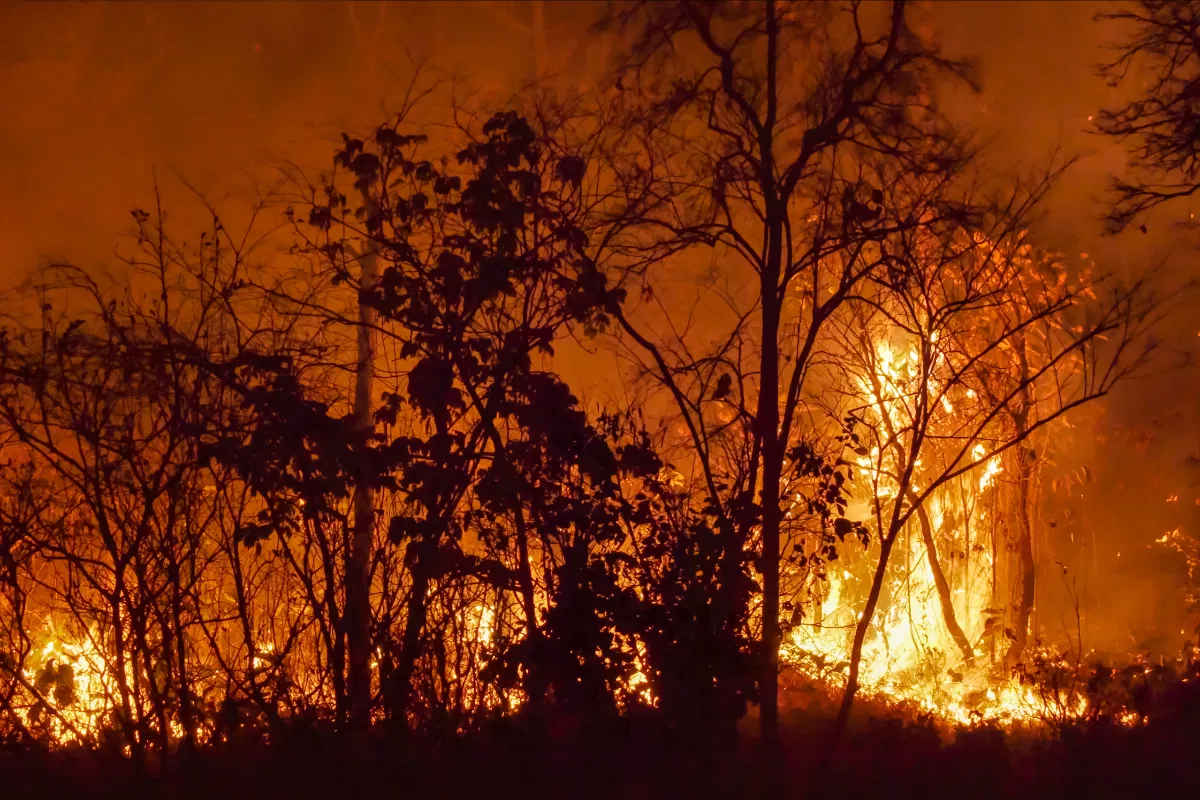By Tarek Salame
From the Greek Islands to the German forest, the continent is cracking under the weight of its latest climate, with temperatures having been pushed to historic highs and 4,000 to flee wildfires. It’s a full-blown atmosphere heat lock-in, where heat doesn’t settle over Europe like a glass lid, trapping heat, choking landscapes, and testing elements of infrastructure, health systems, and political readiness. In Crete, villages were evacuated overnight as the fire spread through the dry terrain.In Verona, opera singers collapsed mid-performance. In Portugal, 46.6°C marked a record-breaking June. They’re happening in different places, but the signs are starting to align. These stories are alarming as they are geographically scattered, yet the pattern is unmistakable. This summer is different.
This has become a new baseline that blends natural extremes with decades of human acceleration, where the heat does not just visit, it settles in and stays. So what’s happening now? And how is Europe coping with what and how to redefine how we live, travel, and work across the continent?
Blazes in the South
On July 2 2025, thick smoke rolled over the hills. By midday, the hills near Ierapetra were already burning. Phone alerts warned residents in villages like Achlia and Agia Fotia — over 1,500 people had to evacuate fast.
On the same day, a second fire broke out in Halkidiki, northern Greece, forcing crews to operate under dangerous heat and wind conditions. In Turkey, east of Izmir, fires moved faster than people could react. Whole neighbourhoods had to clear out.
In Greece, more than 230 firefighters were already on the ground, with nearly 50 engines and helicopters in action. That scale of response usually comes later in summer — not at the start of July.
To the north, Germany’s Saxony region declared a local emergency after fires engulfed the Gohrischheide reserve.
On June 30, a fire in Saxony injured two emergency responders and forced over 100 people from their homes. In the same stretch of days, southern France was dealing with its own wave — smaller fires that tore through farmland and olive groves in Provence, leaving behind blackened soil.
Record highs and rising deaths
Temperatures soared in early July. Mora, Portugal, hit 46.6°C — the highest June reading the country’s ever recorded. Across the border in Spain, Lleida reached 42°C, triggering heat alerts in Catalonia, Andalusia, and parts of Castilla-La Mancha.
The effects were immediate — and in some cases, deadly.
A two-year-old child died in La Rioja after being left in a parked car on June 30.
In Versailles, an American tourist collapsed under the heat. Italy also saw five deaths tied to the soaring temperatures — among them, an elderly man in Puglia and a vineyard worker who collapsed while on shift near Parma.
Emergency responders in Bordeaux and Toulouse were flooded with calls on June 29 — everything from fainting to heat-induced heart strain. Most came in during the hottest hours.
Italy even went as far as to impose a midday work ban for outdoor labourers and high-risk zones. France closed schools and parts of the south. What’s emerging is a divide: those who can escape the heat, and those who must endure it.
Water bans, dry rivers, and heat
By July 1, the heat was emptying reservoirs, slowing hydroelectric dams and setting up profound environmental consequences.
In Albania, the rivers that once powered over a third of the country’s electricity had dwindled to a trickle.
The Drin River, vital for both farming and hydropower generation, reached record lows, forcing the government to import €60 million worth of electricity in June alone.
Heat stress is also amplifying a fragile water cycle, one that is shaped by poor infrastructure, ageing pipes, and inconsistent rainfall. Croatia, Bosnia, and Herzegovina also reported low lake levels by late June, with environmentalists warning that ecosystem shifts could occur if the heat persists into August.
On June 29th, sea temperatures between Sicily and the Balearic Islands were 28°C, nearly 4°C above the average. Fishermen from Valencia to Split report that catches are dwindling, and some species are migrating deeper or disappearing entirely. And these are pushed out by temperatures that were once appearing only in August and even then rarely.
How Europe is adapting
The summer of 2025 isn’t the first to bring chaos, but it may be the first time that chaos becomes routine. In Italy, the midday work ban for labourers is becoming an annual event. In France, cool rooms and public misting stations are now part of the city’s planning. In Spain, the Ministry of Health releases its first heat-specific guidance on mental health.
This acknowledges not just physical risks but also the disorientation, insomnia, and agitation brought on by prolonged exposure. Although these measures are useful, they are scattered, reactive, and are largely urban.
Rural firefighters in Greece continue to work with outdated equipment. Transport networks in Poland and Romania have buckled under thermal expansion, causing slowdowns and accidents. Migrant workers, often the least protected, are left out of labour reforms entirely.
Meanwhile, the World Meteorological Organisation issued the forecast on July 2, stating that extreme heat events in Europe are not only expected to increase in frequency but also double in duration by 2030 even with mitigation efforts.
